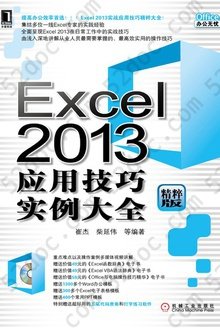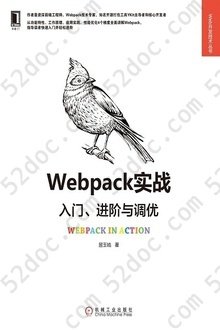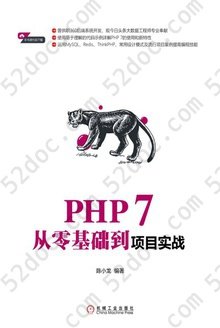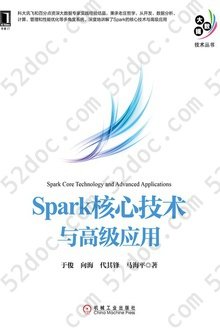注重体验与质量的电子书资源下载网站
分类于: 其它 云计算&大数据
简介
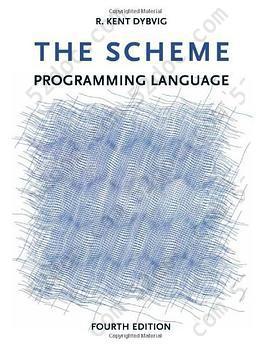
The Scheme Programming Language, 4th Edition 豆 9.2分
资源最后更新于 2020-07-24 15:48:53
作者:R. Kent Dybvig
出版社:The MIT Press
出版日期:2009-01
ISBN:9780262512985
文件格式: pdf
标签: scheme 函数式编程 Lisp Scheme 计算机科学 编程 Programming 计算机
简介· · · · · ·
Scheme is a general-purpose programming language, descended from Algol and Lisp, widely used in computing education and research and a broad range of industrial applications. This thoroughly updated edition of The Scheme Programming Language provides an introduction to Scheme and a definitive reference for standard Scheme, presented in a clear and concise manner. Written for pr...
目录
Table of Contents
Preface
Chapter 1. Introduction
Section 1.1. Scheme Syntax
Section 1.2. Scheme Naming Conventions
Section 1.3. Typographical and Notational Conventions
Chapter 2. Getting Started
Section 2.1. Interacting with Scheme
Section 2.2. Simple Expressions
Section 2.3. Evaluating Scheme Expressions
Section 2.4. Variables and Let Expressions
Section 2.5. Lambda Expressions
Section 2.6. Top-Level Definitions
Section 2.7. Conditional Expressions
Section 2.8. Simple Recursion
Section 2.9. Assignment
Chapter 3. Going Further
Section 3.1. Syntactic Extension
Section 3.2. More Recursion
Section 3.3. Continuations
Section 3.4. Continuation Passing Style
Section 3.5. Internal Definitions
Section 3.6. Libraries
Chapter 4. Procedures and Variable Bindings
Section 4.1. Variable References
Section 4.2. Lambda
Section 4.3. Case-Lambda
Section 4.4. Local Binding
Section 4.5. Multiple Values
Section 4.6. Variable Definitions
Section 4.7. Assignment
Chapter 5. Control Operations
Section 5.1. Procedure Application
Section 5.2. Sequencing
Section 5.3. Conditionals
Section 5.4. Recursion and Iteration
Section 5.5. Mapping and Folding
Section 5.6. Continuations
Section 5.7. Delayed Evaluation
Section 5.8. Multiple Values
Section 5.9. Eval
Chapter 6. Operations on Objects
Section 6.1. Constants and Quotation
Section 6.2. Generic Equivalence and Type Predicates
Section 6.3. Lists and Pairs
Section 6.4. Numbers
Section 6.5. Fixnums
Section 6.6. Flonums
Section 6.7. Characters
Section 6.8. Strings
Section 6.9. Vectors
Section 6.10. Bytevectors
Section 6.11. Symbols
Section 6.12. Booleans
Section 6.13. Hashtables
Section 6.14. Enumerations
Chapter 7. Input and Output
Section 7.1. Transcoders
Section 7.2. Opening Files
Section 7.3. Standard Ports
Section 7.4. String and Bytevector Ports
Section 7.5. Opening Custom Ports
Section 7.6. Port Operations
Section 7.7. Input Operations
Section 7.8. Output Operations
Section 7.9. Convenience I/O
Section 7.10. Filesystem Operations
Section 7.11. Bytevector/String Conversions
Chapter 8. Syntactic Extension
Section 8.1. Keyword Bindings
Section 8.2. Syntax-Rules Transformers
Section 8.3. Syntax-Case Transformers
Section 8.4. Examples
Chapter 9. Records
Section 9.1. Defining Records
Section 9.2. Procedural Interface
Section 9.3. Inspection
Chapter 10. Libraries and Top-Level Programs
Section 10.1. Standard Libraries
Section 10.2. Defining New Libraries
Section 10.3. Top-Level Programs
Section 10.4. Examples
Chapter 11. Exceptions and Conditions
Section 11.1. Raising and Handling Exceptions
Section 11.2. Defining Condition Types
Section 11.3. Standard Condition Types
Chapter 12. Extended Examples
Section 12.1. Matrix and Vector Multiplication
Section 12.2. Sorting
Section 12.3. A Set Constructor
Section 12.4. Word Frequency Counting
Section 12.5. Scheme Printer
Section 12.6. Formatted Output
Section 12.7. A Meta-Circular Interpreter for Scheme
Section 12.8. Defining Abstract Objects
Section 12.9. Fast Fourier Transform
Section 12.10. A Unification Algorithm
Section 12.11. Multitasking with Engines
References
Answers to Selected Exercises
Formal Syntax
Summary of Forms
Index
Preface
Chapter 1. Introduction
Section 1.1. Scheme Syntax
Section 1.2. Scheme Naming Conventions
Section 1.3. Typographical and Notational Conventions
Chapter 2. Getting Started
Section 2.1. Interacting with Scheme
Section 2.2. Simple Expressions
Section 2.3. Evaluating Scheme Expressions
Section 2.4. Variables and Let Expressions
Section 2.5. Lambda Expressions
Section 2.6. Top-Level Definitions
Section 2.7. Conditional Expressions
Section 2.8. Simple Recursion
Section 2.9. Assignment
Chapter 3. Going Further
Section 3.1. Syntactic Extension
Section 3.2. More Recursion
Section 3.3. Continuations
Section 3.4. Continuation Passing Style
Section 3.5. Internal Definitions
Section 3.6. Libraries
Chapter 4. Procedures and Variable Bindings
Section 4.1. Variable References
Section 4.2. Lambda
Section 4.3. Case-Lambda
Section 4.4. Local Binding
Section 4.5. Multiple Values
Section 4.6. Variable Definitions
Section 4.7. Assignment
Chapter 5. Control Operations
Section 5.1. Procedure Application
Section 5.2. Sequencing
Section 5.3. Conditionals
Section 5.4. Recursion and Iteration
Section 5.5. Mapping and Folding
Section 5.6. Continuations
Section 5.7. Delayed Evaluation
Section 5.8. Multiple Values
Section 5.9. Eval
Chapter 6. Operations on Objects
Section 6.1. Constants and Quotation
Section 6.2. Generic Equivalence and Type Predicates
Section 6.3. Lists and Pairs
Section 6.4. Numbers
Section 6.5. Fixnums
Section 6.6. Flonums
Section 6.7. Characters
Section 6.8. Strings
Section 6.9. Vectors
Section 6.10. Bytevectors
Section 6.11. Symbols
Section 6.12. Booleans
Section 6.13. Hashtables
Section 6.14. Enumerations
Chapter 7. Input and Output
Section 7.1. Transcoders
Section 7.2. Opening Files
Section 7.3. Standard Ports
Section 7.4. String and Bytevector Ports
Section 7.5. Opening Custom Ports
Section 7.6. Port Operations
Section 7.7. Input Operations
Section 7.8. Output Operations
Section 7.9. Convenience I/O
Section 7.10. Filesystem Operations
Section 7.11. Bytevector/String Conversions
Chapter 8. Syntactic Extension
Section 8.1. Keyword Bindings
Section 8.2. Syntax-Rules Transformers
Section 8.3. Syntax-Case Transformers
Section 8.4. Examples
Chapter 9. Records
Section 9.1. Defining Records
Section 9.2. Procedural Interface
Section 9.3. Inspection
Chapter 10. Libraries and Top-Level Programs
Section 10.1. Standard Libraries
Section 10.2. Defining New Libraries
Section 10.3. Top-Level Programs
Section 10.4. Examples
Chapter 11. Exceptions and Conditions
Section 11.1. Raising and Handling Exceptions
Section 11.2. Defining Condition Types
Section 11.3. Standard Condition Types
Chapter 12. Extended Examples
Section 12.1. Matrix and Vector Multiplication
Section 12.2. Sorting
Section 12.3. A Set Constructor
Section 12.4. Word Frequency Counting
Section 12.5. Scheme Printer
Section 12.6. Formatted Output
Section 12.7. A Meta-Circular Interpreter for Scheme
Section 12.8. Defining Abstract Objects
Section 12.9. Fast Fourier Transform
Section 12.10. A Unification Algorithm
Section 12.11. Multitasking with Engines
References
Answers to Selected Exercises
Formal Syntax
Summary of Forms
Index



